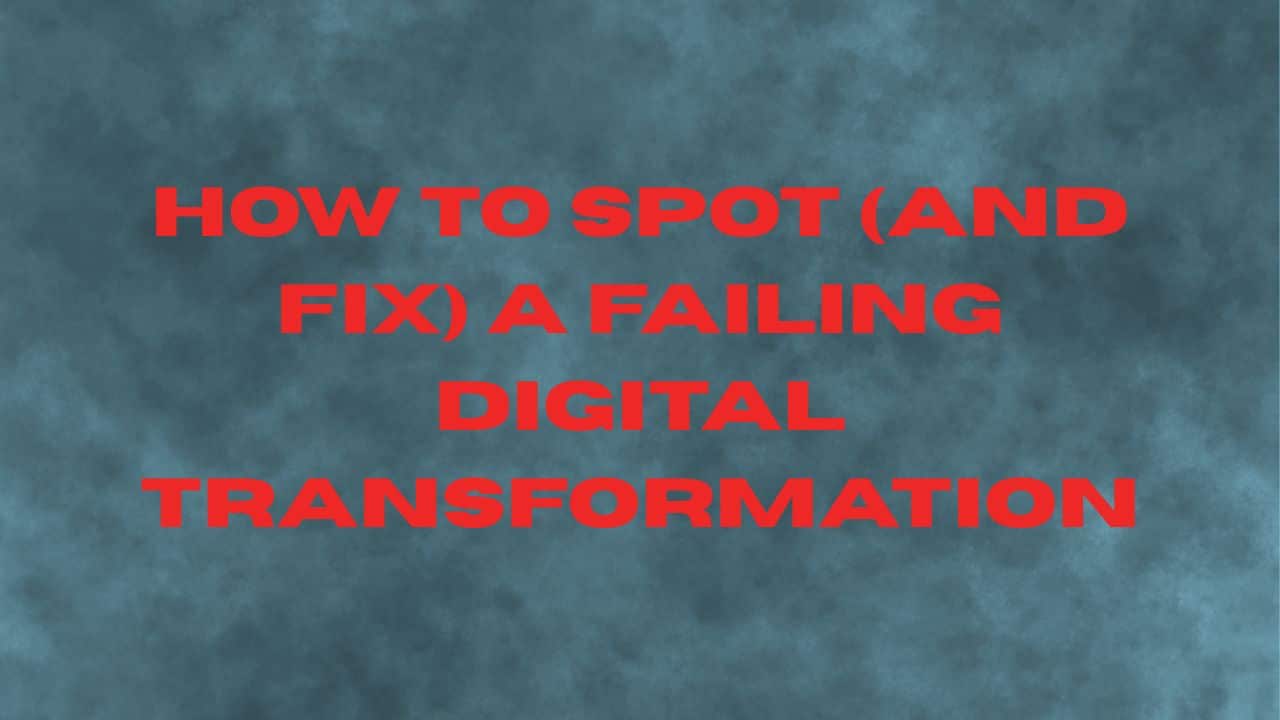Here’s the hard truth: most digital transformations wobble, and many fall. Across studies you’ll see the same pattern, roughly 70% of large-scale change efforts miss their goals, only 20–30% hit full business value, and over half run late or over budget. ERP programs are no exception: independent benchmarks routinely show fewer than one-third deliver on-time, on-budget, and on-scope, and a big share end up “challenged” (partial adoption, heavy rework, or stalled benefits). That’s the backdrop for our recovery work at Third Stage and why a fast, objective health check and a disciplined replan can be the difference between “costly cautionary tale” and “course-corrected success.”
Table of Contents
ToggleStep 1: Run a rapid health check
Before you can fix anything, you need a clear view of reality. We start with a structured assessment across 13 lenses; technology build, architecture and integrations, data, process design, testing, change management, training, governance, resourcing, vendor management, risk, benefits realization, and overall alignment.
Goal: separate facts from wishful thinking and pinpoint where the plan diverged from reality.
Step 2: Salvage what’s working
Troubled doesn’t mean “start over.” Most programs have valuable deliverables, process drafts, data maps, test cases, training outlines, that are part of the puzzle. Identify what to keep, what to rework, and what to retire. This protects morale, preserves momentum, and saves money.
Step 3: Prioritize root causes (not symptoms)
You can’t boil the ocean. Find the handful of issues driving the rest:
- Misalignment at the top. Different answers to “how much standardization?” or “what’s our risk tolerance?” create downstream chaos.
- Underpowered change management. Over-customization, test defects, or user pushback often trace back to unclear future roles, processes, and expectations.
- Data and integration blind spots. Clean data, mappings, and realistic integration plans aren’t optional, they’re the bloodstream.
Fix the source problems first; the symptoms will shrink.
Step 4: Hit pause (selectively) and re-sequence
Vendors and system integrators hate hearing “pause,” but sometimes it’s the smartest move. If leadership alignment, process decisions, or org design aren’t settled, stop the build and resolve them. Otherwise you’re paying to redo work later.
Step 5: Rebaseline the plan
With root causes addressed, rebuild the plan to match how change actually happens:
- Integrated schedule that ties business activities (process decisions, data cleanup, training) to the technology path.
- Clear governance: who decides what, when, and how.
- Realistic staffing: name the internal time commitments and backfill critical roles.
- Benefits and adoption plan: how value will be captured, measured, and protected.
Step 6: Restart in controllable chunks
Relaunch in small, well-scoped phases rather than a single big-bang cutover. Define crisp entry and exit criteria for each phase (what must be true before we start, what “done” looks like), and include risk checkpoints where the team can pause, adjust, or roll back without shame. Every phase should culminate in a live, hands-on demo with real users performing real work, not just a slide deck, so you get fast, honest feedback before expanding the footprint.
Think of each slice as a mini implementation: a narrow process, site, region, or role. Start with a “canary” group that’s supportive and representative, then widen only after you’ve met success measures such as data accuracy, cycle time, adoption, and defect rates. Use techniques like feature flags, parallel runs where practical, and short hypercare windows after each release to catch and correct issues while the blast radius is small.
To make phased restarts work, put guardrails in writing:
- Scope the slice: one process, one location, or one department, no more.
- Entry criteria: clean data loaded, training completed, test cases passed, cutover steps rehearsed.
- Exit criteria: target business outcomes met (for example, order accuracy, close time), user acceptance signed off, open defects below a threshold.
- Operational readiness: cutover playbook, staffed help desk, clear escalation paths, and a rollback option you have actually tested.
- Cadence: short release cycles (two to four weeks), end-of-phase retrospectives, and a decision meeting to approve the next slice.
Short feedback loops beat long assumptions. By delivering value in small increments, you rebuild confidence, reduce risk, and create a rhythm of improvement that the organization can sustain.
Early warning signs you shouldn’t ignore
- “We’ll fix that in phase two” becomes a mantra.
- Project meetings debate tool configuration because business decisions aren’t made.
- Training equals “click here” tutorials with no role clarity.
- Test cycles pass, but end-to-end scenarios fall apart.
- Burnout and turnover on the core team.
If you’re seeing two or more of these, you’re on the edge. Get an independent health check and rebaseline before sunk costs pile up.
Final thought
Digital transformation is messy, but it doesn’t have to be a train wreck. A short, objective assessment; a focus on root causes; and a disciplined replan can turn “troubled” into “back on track.” If you’re unsure where your program stands, reach out, I’m happy to give a quick gut check and point you in the right direction.






